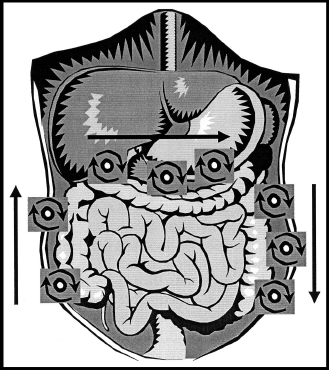The Role of Inflammation in Chronic Pain
One of the buzz words in medicine over the last few years has been "inflammation." It seems we're constantly hearing about inflammatory foods, the anti-inflammatory diet, or how chronic inflammation can lead to cancer. Yet despite the popularity of the word, many people are still left wondering what "inflammation" actually means. So just what IS inflammation? Inflammation is one of the body's natural defenses against disease and infectious agents. It is an important part of whole-body health and occurs when leukocytes (white blood cells) and fluids move to a site of infection or injury in order to prevent tissue death. There are two types of inflammation: acute, and chronic. Acute inflammation is short-term and chronic inflammation is long-term. It is important to understand the difference between the two in the role of disease. Acute inflammation Acute inflammation happens when the body is first injured or exposed to an infectious agent, and symptoms of this type of inflammation can include heat, swelling, redness, and pain. The most common leukocyte involved in the acute inflammatory response is the neutrophil, which has a short life span and engulfs foreign materials found in the body, then kills them with various toxic agents. Neutrophils make up to 70% of all white blood cells in the body; with such a high number of circulating neutrophils, they are usually the first leukocytes to show up at the site of disease or injury, and can be there within 90 minutes of first exposure. Their role is to minimize tissue damage before the rest of the immune system is activated. Acute inflammation doesn’t usually last more than a few days, and sometimes goes away within a few hours. Chronic inflammation Chronic inflammation is long-term. It is this type of inflammation that is found in connection with disease. It can last for several months or can even turn into a life-long condition, such as rheumatoid arthritis. Unlike acute inflammation which causes immediate and pronounced symptoms like swelling and redness, chronic inflammation is low-grade and the effects of it show up over a longer period of time. The active cells involved are macrophages, lymphocytes (B and T cells), and plasma cells. These cells tend to have a longer lifespan than the short-lived neutrophils involved in acute inflammation. Like neutrophils, macrophages engulf and kill infectious agents, but they are larger and live longer. Macrophages release small proteins called cytokines to activate T cells, and T cells can in turn stimulate macrophages, also through cytokines. While cytokines are meant to mediate inflammation, this bilateral stimulation between macrophages and T cells can turn into a cycle of chronic inflammation when an inflammation-stimulating condition continues to persist in the body. Activated B cells can develop into plasma cells, which produce antibodies to attack what is, or is perceived to be, a foreign agent. When a long-term inflammation stimulant exists in the body it can lead to overproduction of lymphocytes and plasma cells. The causes behind chronic inflammation are varied but can be infectious agents, such as bacteria or viruses; exposure to foreign agents like chemicals; the presence of parasites; or hereditary diseases. Once the cycle of chronic inflammation is activated, it can be difficult to shut down, especially when one continues to be exposed to an inflammation-causing agent. So how does all of that cause chronic pain? Chronic inflammation can lead to chronic pain in a variety of ways. Causes of pain can be over-accumulation of fluid in body tissues; lymphatic antibodies that direct themselves against certain body tissues (for example, in rheumatoid arthritis the body produces antibodies that attack the joints); or neoplasia (new growth) of lymphocytes or tissues where they don’t belong. Some diseases that have been found to be linked to chronic inflammation are rheumatoid arthritis, diabetes, endometriosis, inflammatory bowel disease (IBD), interstitial cystitis, some types of cancer, fibromyalgia, lupus, and others. So what can I do about my chronic pain or inflammation? Some everyday changes that may be helpful in reducing your inflammation are decreasing your exposure to harmful chemicals such as bleach or DDT, following an anti-inflammatory diet, and making sure your affected body parts are getting proper blood flow. As always, if you have a problem with chronic pain or an inflammatory disease, it is important to visit with your doctor on a regular basis to discuss the best therapies and modalities to fit your needs.
---
References:
Mattson Porth, C. (2011). Essentials of pathophysiology: concepts of altered health states (3rd ed.). Philidephia, PA: Wolters Kluwer.























